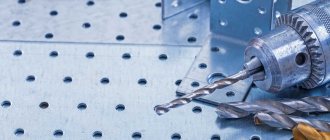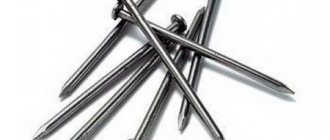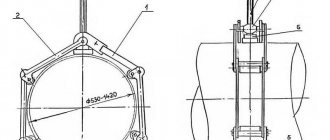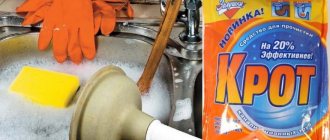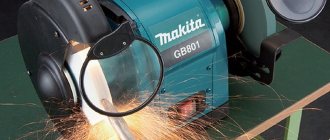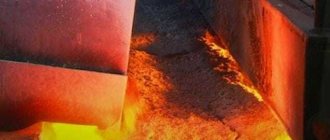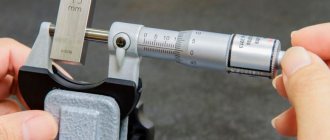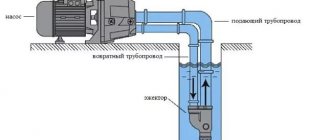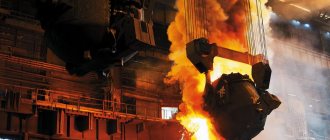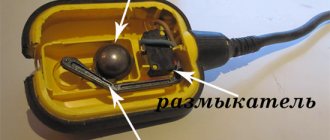Areas of application of cast iron. | CNC Motors
Cast iron is widely used in the production of products for various purposes. The main qualities of cast iron are low cost, good casting qualities, strength and hardness.
Cast iron is used where it is necessary to obtain parts of complex shapes and sufficient strength. For example, machine beds, body parts or artistic cast-iron fences.
Everyone is well aware of the artistic decorations of the embankments of St. Petersburg, made of cast iron. The openwork cast gates of the Winter Palace, as well as other monuments, are no less beautifully decorated.
In the automotive industry, cylinder blocks of internal combustion engines are made from cast iron (in modern production they use cast iron with vermicular graphite), as well as crankshafts of diesel engines.
Cast iron is widely used in plumbing equipment - bathtubs, sinks and kitchen sinks are made from cast iron, as well as heating radiators, pipes and fittings.
For example, bathtubs made of cast iron are highly valued by experts for their reliability, durability and ease of use. Such bathrooms can last for decades, maintaining their original appearance without changes.
Casting followed by milling
The bulk of cast iron products is produced by casting followed by cutting (milling).
For example, a massive machine bed is cast into a mold that has low accuracy. After receiving the casting, critical parts of the frame are further processed using milling to obtain high precision and excellent surface quality.
Such places that require additional processing are usually planes, holes, seats for attaching a spindle and other parts of the future machine, etc.
Milling cutters for cast iron
For high-quality and productive processing, cast iron must be processed in compliance with the required cutting conditions, using high-quality cutters. It is advisable to check with specialists which cutters and milling modes to choose.
You can get a consultation by calling 8 (499) 653-52-64, or sending a message from a special page on our website. Consultation is guaranteed!
Only reliable end mills is the motto of our company! Best wishes, CNC Motors.
cncmotors.ru
The use of cast iron of different grades in various industries
An alloy of iron containing carbon is called cast iron. In some cases, alloying additives are added to the composition, affecting its consumer qualities. Cast iron is a metal that is used primarily in ferrous metallurgy. It is not only used to produce steel, it is also in demand in the manufacture of forged artistic parts.
Gray cast iron
For mechanical engineering, gray cast iron containing graphite is mainly used. Parts made from such material do not react to stresses; they absorb vibrations that occur when mechanisms vibrate. Critical parts are made from it
- Bushings;
- Machine beds;
- Heavy bases.
It began to be used as a structural material in almost all enterprises of the mechanical engineering industry. The following industries became the largest consumers of gray cast iron
- Automotive industry;
- Machine tool industry;
- Metallurgy;
- Sanitary.
Tractor parts made from gray cast iron reach 20% of the total number of parts. This use of this alloy is associated with high wear resistance. It does not lift up in case of high friction and lack of lubrication, in other words,
has damping ability. It is made from:
- Blocks;
- Bearing caps;
- Brake discs;
- Ferrado;
To manufacture the cylinder head of various engines, of low-alloy alloy :
- SCh20;
- SCH25.
The main requirements for the midrange during the production of liners were:
- Pearlite structure;
- Graphite;
- High hardness.
For car engines of any design, cylinder liners made of a special alloy are used.
In most cases, its phosphorous fraction is used. Diesel engines during operation create a large load on the cylinder block , so alloy cast iron is used for them. Cylinder heads are made from high carbon alloy grades,
The same requirements are observed in the manufacture of liner castings, the material of which is a low-alloy alloy.
The chemical composition of this material depends on several technological characteristics:
- Melting method;
- Casting dimensions;
- Manufacturability of form.
Cars are equipped with cast iron camshafts, which are highly wear-resistant. This parameter is achieved thanks to surface hardening to which the metal is subjected.
When a part is operated at high speeds, when dry friction occurs, it is necessary to have increased wear resistance of the material and a high coefficient of friction. It is in such conditions that this alloy is simply irreplaceable.
Brake drums operating in such conditions are made from SCh20. When a part experiences high loads and thermal cracks may appear, a special heat-resistant alloy with a high carbon content and a high level of alloying is used.
For particularly severe conditions, parts made of pearlitic cast iron are installed. It contains vermicular graphite.
The rotation of the flywheel during operation reaches 7000 rpm.
This speed causes tensile stresses to appear. The rotating surface of the flywheel constantly touches the working surface of another part. Such friction causes a strong release of heat, resulting in thermal cracks that negatively affect the strength of the part. To increase strength , given the large weight of the flywheel and the size of its cross-section, it is made from various grades:
- SCH25;
- SCh30;
- SCH35.
It must provide a workpiece strength above 250 N/mm2. Sometimes SCh 35 has strength that is not enough to ensure normal operation of the flywheel. In this case, cast iron is used, to which nodular graphite is added.
Passenger cars boast cast iron caps covering the main bearings . This design is found in most cases on cars with a carburetor engine. To ensure a pearlite structure, as well as high hardness exceeding 200 HB, SCh25 is used for the manufacture of bearing caps.
Manufacturing of collectors
In a car, the exhaust manifolds are exposed to exhaust gases, the temperature of which reaches 90 degrees. Collectors under the influence of an aggressive environment oxidize, deform and crack.
The use of gray cast iron ensures durability of such parts and high efficiency. Due to the fact that the thickness of the collector walls is very small, less than 7 mm, SCh15 is used for their manufacture. To increase its heat resistance, cast iron is alloyed with chromium or nickel additives.
For the manufacture of collectors experiencing high thermal loads, the following is used:
- Ductile iron;
- With additives of spherical graphite;
All of the above materials have high heat resistance and resistance to aggressive environments, alkalis and oxides.
Machine tool industry
In the machine tool industry, a large number of cast parts are made from gray cast iron, operating in various conditions, the weight of which can reach 100 tons , with a maximum wall thickness of 200 millimeters.
The classification of such cast parts in the machine tool industry, depending on the designs and the operating conditions created, corresponds to the current standard.
For each part, a special grade of cast iron is selected . It depends on the following parameters:
- Class of the workpiece;
- Wall thickness;
- Hardness;
- Microstructures.
Considering the specifics of many machine-tool parts, which work mainly on rigidity, for their manufacture they prefer to use cast iron, which has increased hardness and fairly low ductility.
The chemical composition of such cast irons is high in manganese and low in carbon. To obtain high hardness of cast iron, alloying and other technological processes are used.
SSP blanks are widely used in metallurgical equipment:
- Sheet rolls;
- Molds;
- Slag bowls.
Plumbing
A lot of cast iron products are used in plumbing. Made from cast iron:
- Heating radiators;
- Pipes;
- Fitting;
- Sinks;
- Kitchen sinks.
And today cast iron bathtubs remain in demand, which are distinguished by high strength , durability and reliability. Such products can be used for decades. They retain their original appearance and do not require replacement.
Craftsmen make artistic masterpieces from cast iron. For example, the embankments of St. Petersburg are decorated with cast iron parts. Walking along the streets of the city you can see openwork gates and original cast-iron fences. In the parks you can see cast iron monuments.
Application of Ductile Iron
This material has excellent damping properties and is capable of excellent performance at very low temperatures. This type of cast iron is used in the production of critical parts for tractors, as well as cars, which will have to perform their work in difficult climatic conditions.
Parts made of malleable cast iron have also found their application in the electrical industry . It is made from:
- Terminals;
- Insulator hooks;
- Wire holders.
Such products cope well with force loads; they can bend under mechanical stress.
In textile engineering , ductile iron is used in the manufacture of:
- Gears;
- Forks
- Spokes;
- Parts for paper spinning machines.
In other words, for parts experiencing large static loads, subject to friction and rapid wear. For such products, anti-friction malleable cast iron is used, which is capable of creating minimal friction where there is maximum contact between the parts.
Malleable cast iron is also used in plumbing products . It is made from:
- Water outlets;
- Flange adapters;
- Valves;
- Heating radiators.
These products can work for a long time in an aquatic environment.
Gas systems use ductile iron to make the outlet fittings that connect pipes where all sorts of branches occur.
A variety of grades of malleable cast iron are widely used in landscape design when decorative parts are formed:
- Original hedges;
- Benches;
- Gates;
This alloy is also used in the furniture industry, for elements that can be affected by precipitation:
- Terrace furniture;
- Gazebos.
Parts for household equipment are made from it
- Vann;
- Washing machines;
- Gas stoves;
- Frying pan;
- Kotelkov.
A lot of car parts are made of ductile iron . These include:
- Drives;
- Wheel hubs
- Gears;
- Carters;
- Engine brackets;
- Skating rinks;
- Brake pads;
- Overlays;
- Balancers
- Cardan shafts;
- Collectors.
Shipbuilding cannot do without malleable cast iron. In the manufacture of equipment for ships, CC is used for the production of:
- Portholes;
- Mast brackets;
- Oarlock;
- Breshtuk;
- Water fittings.
Malleable cast iron has not been forgotten in the railway industry. During the construction of cars, the following are made from it:
- Spare parts for air brakes;
- Bearings;
- Brackets
- Traction and coupling systems;
- Staples.
For many centuries, humanity has been using cast iron; today almost every person deals with such an alloy. It is highly durable and has a relatively low cost . The only drawback of cast iron parts is their fragility. But, with the correct technology for producing cast iron, this disadvantage is minimized, which is why cast iron parts are so widely used in the industries described above.
Rate this article: Share with friends!
stanok.guru
Topic 6: Scope of materials.
16>
Lesson 16. The use of cast iron, steel, alloys of non-ferrous metals, non-metallic materials for the manufacture of parts in the automotive industry.
All materials based on their chemical basis are divided into two main groups - metallic and non-metallic.
. Metals include metals and their alloys. Metals make up more than 2/3 of all known chemical elements.
In turn, metal materials are divided into ferrous and non-ferrous. To the blacks
include iron and alloys based on it - steel and cast iron.
All other metals are non -ferrous
. Pure metals have poor mechanical properties compared to alloys, and therefore their use is limited to those cases where their special properties (for example, magnetic or electrical) must be used.
The practical value of different metals is not the same. Ferrous metals are most widely used in technology. More than 90% of all metal products are made from iron. However, non-ferrous metals have a number of valuable physical and chemical properties that make them irreplaceable. Of the non-ferrous metals, aluminum, copper, magnesium, titanium, etc. are of greatest industrial importance.
In addition to metal, various non-metallic materials - plastics, ceramics, rubber, etc. - occupy a significant place in industry. Their production and use are currently developing at a faster pace than metal materials. But their use in industry is small (up to 10%) and the prediction thirty years ago that non-metallic materials would significantly replace metal ones by the end of the century did not come true.
Application of cast iron in mechanical engineering Machine-building plants mostly produce malleable ferritic cast iron, and in small quantities pearlitic cast iron, despite the fact that the latter is characterized by higher wear resistance, strength, works well at high temperatures, has high fatigue strength, dampens vibrations, etc. etc. Parts such as camshafts and crankshafts, diesel engine pistons, valve rocker arms, clutch elements and much more are made from malleable pearlitic cast iron.
Nodular graphite material has found use in the automotive industry as a modern structural cast iron and a replacement for carbon steel, as well as gray and ductile iron.
The areas of use of such material are determined by its high operational, structural and technological characteristics and, in most cases, an excellent combination of these properties.
The main distinguishing feature of cast iron is its use in the manufacture of both small parts, the weight of which is several hundred grams (for example, piston rings), and fairly large parts, the weight of which can reach up to 150 tons; both thick-walled (up to 10 cm) and thin-walled (from 3 to 5 mm) parts. Parts are used not only in the cast state, but also after the necessary heat treatment. We all remember very well from everyday life cast iron bathtubs, which differ from others in their excellent performance characteristics, while their weight is very high. In the automotive industry, this type of cast iron is used to make engine cylinder blocks.
A striking example of the use of this type of cast iron, which replaced steel forgings, are crankshafts for the engines of large diesel tractors and cars. Such cast iron parts, in addition to being cheaper than forged steel ones, also surpass them in terms of performance.
Application of steels in mechanical engineering For the manufacture of automotive parts, many grades of low-carbon and medium-carbon alloyed and low-alloy steels specified by GOST 4543-71 and GOST 19282-73 are used. Sometimes steels are also used that are not currently included in GOST and are produced according to the specifications of automobile industry plants. In table Table 5 shows the most common groups and grades of alloy steels (GOST 4543-71), examples of their use in the production of automotive parts and typical options for their heat treatment. Alloy steels are usually subjected to thermal or chemical-thermal treatment.
Low-alloy steels (GOST 19282-73) usually contain up to 0.25% of non-deficient, but quite strong alloying elements. The use of these steels instead of carbon steels makes it possible to reduce the weight and cross-section of parts while maintaining the same or higher mechanical properties. Compared to high-quality carbon steels, these steels are characterized by increased strength, wear resistance, and corrosion resistance due to the increased content of manganese, chromium, copper, and other additives. At the same time, they are usually cheaper than alloy steels, so their use in the automotive industry has been increasing over the years. Low-alloy steels are especially widely used in the manufacture of parts of truck frames (spars and cross members), disks and other wheel parts, and rear axle housings.
Application of non-ferrous metals and their alloys in mechanical engineering Many non-ferrous metals and their alloys have a number of valuable properties: good ductility, toughness, high electrical and thermal conductivity, corrosion resistance and other advantages. Thanks to these qualities, non-ferrous metals and their alloys occupy an important place among structural materials.
Among the non-ferrous metals in the automotive industry, aluminum, copper, lead, tin, magnesium, zinc, and titanium are widely used in pure form and in the form of alloys.
16>
Date added: 2016-06-05; views: 4777; ORDER A WORK WRITING
Find out more:
Where is cast iron used | Metall
23/01/2015
Cast iron products have been known to a wide circle since ancient times and therefore, in our time, it is difficult to meet a person who does not know, have not heard of or have not encountered this alloy in his life. It is everywhere and everywhere - its application is so widespread. Cast iron is an iron alloy with a low carbon content, into which various additives are introduced, which greatly improves its quality.
Advantages of cast iron
The obvious superiority of cast iron compared to other metals can be assessed based on its area of application, quality characteristics, casting properties and value. This is a truly leading alloy in its segment and has undeniable advantages:
- 1. Large-scale application.
- 2.Availability and low price.
- 3.Excellent casting properties.
- 4.Highest strength and hardness.
- 5.Good malleability.
- 6.Durability.
Application area
Most of all, cast iron is used in heavy industry, metallurgy, machine tool building and mechanical engineering. The volumes of its use in these industries are enormous, from very small products to simply huge and heavy ones.
This is the production of massive bases for machine tools, various blocks, shafts, heads, bushings - for engines, both gasoline and diesel. The pipe rolling industry produces pipes of very high quality and durability, from very small sizes to large diameter pipes.
A lot of products are made from cast iron for household needs, which most people encounter every day in everyday life. Essential goods, as they can be called. These include various taps, valves, fittings, radiators and pipelines.
Some people still use cast iron sinks, sinks and bathtubs and give preference to them, despite the large selection of these products from other materials.
Another good quality of cast iron is its malleability. Professional blacksmiths consider it the best metal for these qualities. They make fences, fences, various bas-reliefs, edged weapons, and miniatures from it. Many of their products are not only beautiful and attractive, but also represent real masterpieces of art.
Another use of cast iron is casting. It can also be classified as art, which is what it actually is. There are also many beautiful works here that deserve attention and are works of art.
No matter how good this metal is, it still has one important flaw that comes from its hardness. This is fragility. Even one blow is enough, not strong, but sharp, and the cast iron cracks or falls into small pieces.
Advantages of cast iron and areas of its application
Cast iron has been used for centuries, and now you can hardly find a person who has never heard of this alloy. Products made from it are used everywhere, as they are durable and relatively inexpensive.
Cast iron is an iron alloy that has a low carbon content. By adding special additives it is possible to significantly improve the quality of this material.
Advantages of cast iron
The key advantages of cast iron are immediately visible if you analyze the areas where this alloy is used and study the quality characteristics of the material. Among the main advantages are the following:
- Wide range of applications.
- Reasonable cost and relative simplicity of the production process.
- Remarkable casting characteristics.
- High strength.
- Cast iron is easy to forge.
- Features a long service life.
Areas of application
Cast iron has always been in demand in heavy industry, metallurgical and mechanical engineering industries, and machine tool building. Here it is used in large volumes, both very small parts and large-sized products weighing hundreds of tons are made from it.
Components for machine tools, shafts, and engines are made from cast iron. Pipes made from this alloy are in great demand, as they meet all the necessary requirements for durability and reliability.
The use of cast iron in everyday life has made this metal alloy popular among the population. In particular, taps, valves, fittings, heating radiators, and pipes are made from it. Many plumbing products are also made either entirely or partially from cast iron. Perhaps you have ever seen heavy but durable sinks and bathtubs made half a century ago. They can still be safely used; it is cast iron that ensures their durability.
What other advantages does this metal alloy have? Any blacksmith will tell you that forging cast iron is as easy as shelling pears. It is not without reason that various fences, bas-reliefs, and all kinds of beautiful decorative elements are often made from it. And in museums you can even see works of art forged from cast iron.
As for casting, this technology allows you to create many good, beautiful things. Cast iron products are practically not subject to wear and tear and will look great even after years. And if they suddenly turn out to be unnecessary, then they can be disposed of - sell scrap metal at a favorable price and make good money on it. As a recyclable material, cast iron is always valued.
Now a few words about the shortcomings. Cast iron has its flaws, the main one being fragility. Unfortunately, it can be split or deformed with a strong impact; however, this property of the material also largely depends on the processing technology of the alloy.
planetaloma.ru
Advantages and disadvantages
This material, like any other, has its strengths and weaknesses.
The advantages of cast iron include the following factors:
- Sometimes it is even compared in terms of characteristics to steel, because certain types of it are characterized by increased strength.
- Retains temperature for a long time: when heated, heat is distributed evenly throughout it and remains unchanged for a long time.
- It is an environmentally friendly material, which is why it is often used in the manufacture of utensils in which food will be directly cooked.
- Does not react to acid-base environment.
- It is a durable material.
- The longer a product made from this material is used, the better its quality becomes.
- This material is absolutely harmless to the human body.
The disadvantages include the following factors:
- It can become rusty even if water is kept in it for a short time.
- It is a very expensive material, but despite this, it fully justifies itself. Quality, practicality and reliability are the main features of products made from this alloy.
- Gray cast iron is characterized by low ductility.
- White is very fragile and is most often melted down.
history of appearance, receipt and use
An alloy of iron and carbon with minor additions of other elements called cast iron has been known to mankind for more than 2500 years. Ease of production, low cost relative to other metals and good physical properties have long kept cast iron among the leaders in metallurgy. It was used to make a wide range of goods and machines for various purposes, from consumer goods to multi-ton monuments and machine parts.
In recent decades, cast iron has increasingly been replaced by more advanced modern materials, but it will not be possible to abandon cast iron overnight - the transition to new materials and technologies requires too much expense. Cast iron will remain one of the main types of metallurgical products for a long time. Here is a small selection of facts about this alloy:
1. Answering the question “What is an iron-carbon alloy?” you need to not say “cast iron” right off the bat, but clarify what the carbon content is in this alloy. Because steel is also an alloy of iron and carbon, it just contains less carbon. Cast iron contains from 2.14% carbon.
2. In practice, it is quite difficult to determine whether the product in front of you is cast iron or steel. Cast iron is a little lighter, but you'll need to have a similar item to compare the weight. In general, cast iron is weaker magnetic than steel, but there are many grades of steel with the magnetic properties of cast iron. A reliable way is to get some sawdust or shavings. Cast iron filings get your hands dirty, and the shavings crumble almost into dust.
3. The Russian word “cast iron” itself reveals the Chinese origin of the metal - it is made up of sounds associated with the hieroglyphs “delo” and “cast”.
4. The Chinese received the first cast iron approximately in the 6th century BC. e. Several centuries later, the production of cast iron was mastered by ancient metallurgists. In Europe and Russia, they learned to work with cast iron already in the Middle Ages.
5. In China, they mastered the technology of cast iron very well and produced a wide range of products from this material, from buttons to large sculptures. Many houses had thin-walled cast iron woks, the diameter of which could reach up to a meter.
6. By the time cast iron spread, people already knew how to work with other metals, but cast iron was cheaper and stronger than copper or bronze and quickly gained popularity.
7. Cast iron was widely used in artillery. In the Middle Ages, both cannon barrels and cannonballs were cast from it. Moreover, even the appearance of cast iron cannonballs, which had greater density and, accordingly, weight compared to stone ones, was already a revolution, making it possible to reduce the weight, barrel length and caliber of guns. Only in the middle of the 19th century did the transition from cast iron to steel guns begin.
8. Depending on the carbon content, physical properties and production purposes, there are 5 types of cast iron: pig iron, high-strength, malleable, gray and white.
9. In Russia, natural gas was used for the first time in the smelting of cast iron.
10. When reading books about pre-revolutionary times and the beginning of the 20th century, do not confuse: “cast iron” is a cast iron pot, and “cast iron” is a railway. Rails began to be made of iron immediately after the invention of the puddling process at the beginning of the 19th century, and iron rails were called cast iron another 150 years later.
11. The process of smelting cast iron begins with the removal of impurities from the ore, and ends with the absorption of carbon by the iron. True, this explanation is too simplified - the bonds of carbon with iron in cast iron are fundamentally different from the bonds of mechanical impurities, and even more so of oxygen with iron in ore. The process itself takes place in blast furnaces.
12. Cast iron cookware is practically eternal. Cast iron pots and frying pans can serve families for generations. In addition, a natural non-stick coating forms on old cast iron due to fat getting into the micropores on the surface of the frying pan or cast iron. True, this applies only to old samples - modern manufacturers of cast iron cookware apply artificial coatings to them, which have completely different properties and close the pores from fat particles.
13. Any qualified chef uses primarily cast iron kitchen utensils.
14. Crankshafts of automobile diesel engines are made from cast iron. This metal is also used in brake pads and engine blocks.
15. Cast iron is widely used in mechanical engineering. All massive machine parts such as bases, frames or large bushings were made of cast iron.
16. Rolls for metallurgical rolling mills are made of cast iron.
17. In plumbing, water supply, heating and sewerage, cast iron is now being actively replaced by modern materials, but ancient materials are still in demand.
18. Most of the decorations on the embankments, some of the artistic gates and fences and some monuments in St. Petersburg are cast from cast iron.
19. In St. Petersburg there are several bridges assembled from cast iron parts. Despite the fragility of the material, the thoughtful engineering design has allowed the bridges to stand for 200 years. And the first cast iron bridge was assembled in 1777 in Great Britain.
20. In 2021, 1.2 billion tons of pig iron were smelted in the world. Almost 60% of the world's pig iron is produced in China. Russian metallurgists occupy fourth place - 51.6 million tons - behind, in addition to China, Japan and India.
Vote with the stars!
Also no less interesting facts:
100-faktov.ru
Forged fences and stairs
You can order metal stairs for interlevel connections in a private house by selecting. Companies that install metal doors, fences, stairs and front garden fences are replete with such an incredible variety of designs that everyone can choose an option to suit their taste. There is the possibility of individual ordering according to the client’s own sketches. The cost of forged products depends on the complexity and volume of work, the amount of cast iron, speed of execution, company prices and some other factors, but on average it is acceptable and affordable to anyone who wants to decorate their home and yard with fashionable and stylish fences and openwork grilles.
How is cast iron obtained? An alloy of iron with which substance produces cast iron?
Cast iron is a metal widely used in various industries, characterized by remarkable performance characteristics. The process of obtaining it is relatively simple and does not include too many steps. This material is smelted in blast furnaces - special furnaces that are something like an enlarged copy of a test tube. We’ll talk about how cast iron is made further in detail.
Mining and processing plants
The main raw material used in the production of cast iron is iron ore. It is mined in quarries in different places in our country. As you know, mined ore contains a large amount of various types of impurities. Of course, it cannot be used for melting cast iron in such a “raw” form. Therefore, at the first stage, it goes to special enterprises - mining and processing plants. Here waste rocks are removed from it and crushed. Then the clean ore is loaded into train cars and sent to metallurgical plants.
Agglomeration process
In fact, we’ll look at how cast iron is produced below. Now let's talk about how ore is prepared for smelting directly at metallurgical plants.
If ordinary crushed material is used for smelting, the productivity of the blast furnace will drop sharply. The fact is that such a charge has a low degree of gas permeability. Therefore, before loading into the blast furnace, ore must undergo an agglomeration process.
This procedure is carried out in specialized workshops of metallurgical plants and is a process of sintering rock into pieces of a certain size most suitable for smelting cast iron. Adhesion occurs at a high temperature sufficient to easily melt the surface of the charge particles. As a result, the latter simply stick together to form pieces. In this case, the ore is first mixed with coal. As a result of the combustion of the latter, the temperature necessary for obtaining pieces is achieved. The agglomeration process is stimulated by passing air flows through the layer of ore with coal (from top to bottom).
Not only ore can be used to obtain sinter. Sometimes it is also made from small pieces of iron. Its alloy with what substance makes it possible to obtain cast iron will be discussed below. Of course, it is not pig iron that is used to produce this metal. Regular scrap metal is melted down into cast iron.
What happens in the oven
So, let's look at how pig iron is produced in a blast furnace. The inside of a stove of this design is lined with brick. The principle of its operation is relatively simple. In the production of cast iron, in addition to sinter, coke, lime and flux are used. A mixture of these materials is prepared in a certain proportion. This is what is called a blast furnace charge. It is poured into special lifts and raised to the very top of the furnace.
In order for coke to ignite, a large amount of air enriched with oxygen is necessary. It is fed into the blast furnace from below, through special openings called tuyeres. It is blown into the furnace under very high pressure. This is necessary so that air penetrates through the layer of charge supplied from above. In this case, the flow is preheated to 600-800 degrees, otherwise the temperature inside the furnace will drop.
The cast iron obtained by straightening the charge flows down and is released out through a special hole called a taphole at intervals of approximately once every 40 minutes. Next, it is poured into large-capacity bowls and transported to steelmaking shops.
Reduction and carburization of iron in a furnace
All blast furnaces operate on the counterflow principle. At the same time, the following chemical processes alternately occur in them:
- Iron recovery. This process occurs sequentially and looks like this: Fe2O3 - Fe3O4 - FeO - Fe. The reducing agent in this case is carbon monoxide (CO), formed by the interaction of CO2 with hot coke, as well as solid carbon of the latter.
- Carbonization of iron. The reaction in this case looks like this: 3Fe + 2CO = Fe3C + CO2 + Q. Fe3C carbide easily mixes with solid iron, resulting in the formation of an alloy of the latter with carbon. Flowing down, it washes the pieces of coke and carbonizes even more. In addition, substances such as manganese, sulfur, silicon, etc. dissolve in it.
Thus, it becomes clear that blast furnace metal is an alloy of iron with what substance. Cast iron can be obtained simply by carburizing the charge melt.
Restoring other items
Mn, silicon, sulfur and phosphorus enter the blast furnace along with the charge in the form of various chemical compounds. Higher manganese oxides are reduced to MnO according to approximately the same principle as iron: MnO2 - Mn2O3 - Mn3O4 - MnO. Pure manganese is released as follows: MnO + C = Mn + CO - Q. Silicon enters the furnace in the form of silica SiO2. Its reduction occurs by the reaction SiO2 + 2C = Si + 2CO - Q.
Phosphorus is reduced by hydrogen, solid carbon and CO and, unfortunately, goes into cast iron almost completely. This element deteriorates the blast furnace iron alloy. Allows you to obtain good quality cast iron with silica present in the charge, as well as higher manganese oxides. In some cases, Mn is added to the blast furnace on purpose. This produces a special type of cast iron - manganese.
Wax removal
The question of how to obtain cast iron of good quality also comes down to cleaning it from this undesirable element. Sulfur is the main harmful impurity that significantly worsens the properties of the final smelting product. Its main quantity is contained in coke. Sulfur is removed by increasing the lime (CaO) content in the charge and increasing the temperature in the furnace. The reaction in this case looks like this: FeS + CaO = FeO + CaO + Q. Other methods can be used to reduce the percentage of sulfur content in cast iron. For example, sometimes the already smelted material is processed in a discharge chute or a bowl of soda. In this case, the removal of sulfur occurs as a result of the reaction FeS + NaCO3 = FeO + Na2S + CO2.
Slag formation
Thus, we have found out how cast iron is produced. However, when this material is smelted, another product is obtained that is widely used in the national economy. When melting 1 ton of cast iron, 0.6 tons of slag comes out. The fact is that even refined iron ore contains a fairly large amount of clay. Coke also contains ash. To remove these unnecessary elements, among other things, fluxes (calcium and magnesium carbonates) are added to the charge. During the smelting process, they enter into a chemical reaction with various types of impurities, resulting in the formation of slag. It is an aluminosilicate or silicate melt.
The density of slag is less than that of liquid cast iron. Therefore, during the melting process it is located underneath. It is removed periodically through a separate taphole, called a slag taphole. This by-product of iron foundries is used mainly for the production of cement and building blocks as a filler.
Types of cast iron
As you can see, the question of how to get cast iron in a blast furnace is relatively simple. Ultimately, however, the furnace may leave a material that is slightly different in chemical composition and physical properties. All cast irons are mainly divided into two varieties: pig iron (white) and foundry cast iron (gray). The first type is used as a raw material in the production of steel. Foundry is used to produce various types of cast iron products, which are in good demand on the market.
White cast iron
The share of this type of metal smelted in blast furnaces is 75-80%. The main properties of such cast iron are: high hardness, brittleness and wear resistance. It usually contains more manganese and sulfur than foundry. White cast iron is difficult to process. It is impossible to use conventional cutting tools of modern machines to make any products from it. But steel is obtained from cast iron of this type quite simply. Depending on the method of further smelting, pig furnace metal is divided into three classes: open-hearth (M), Bessemer (B) and Thomas (T).
Cast iron
Carbon in this material is mainly contained in the form of free graphite, which contains silicon. It is supplied for the manufacture of cast iron products in the form of pigs. This material is marked with the letter “L” and numbers from “1” to “6”, depending on its purpose. There is also cast iron refined by magnesium, marked with the letters “LR”.
Well, we hope that we have sufficiently answered the question of what alloy of iron with what substance makes it possible to obtain cast iron. This is ordinary carbon that replaces the oxygen contained in the ore in the blast furnace. The main properties of cast iron depend on the amount of impurities included in its composition: manganese, phosphorus, silicon and sulfur.
fb.ru

